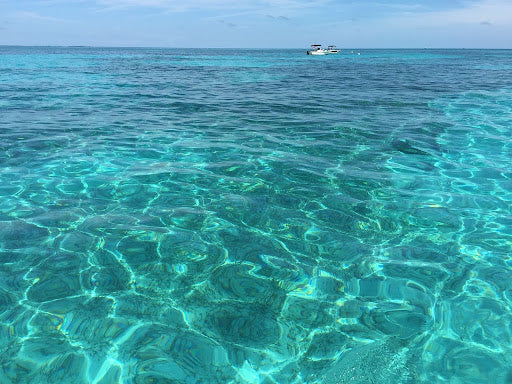Biscayne National Park is unique for the fact that 95 percent of it is underwater. Not only that, the park is only accessible by boat—making it one secluded island that’s worth stopping at while in Florida. Located southeast of Miami, this national park is the biggest marine sanctuary in the National Park Service, where manatees, dolphins, sea turtles, and more can be seen. The park is also bordered by beautiful, lively mangrove forests and is home to Florida Reef, the only coral barrier reef in the United States. It’s no wonder why so many visitors want to make their way to this tropical national park.
If you’re heading to Florida on your southeast national park roadtrip, here is your guide to exploring Biscayne National Park.
Know Before You Go
Biscayne National Park has no entrance fee and is open year round. The park is only accessible by boat, meaning RVers will need to leave their vehicles in a designated RV spot before traveling to the island. Be sure to bring proper sun protection to the park. It’s busiest time of year is in the winter, and although summer brings the bugs and heat, it’s the best time of year to explore clear water.

Where to Explore
While at Biscayne National Park, you can do everything from snorkeling and swimming to exploring history in a museum. Here are the best places to explore while in the park.
Maritime Heritage Trail
What’s cooler than taking a boat to a remote spot in the middle of the Maritime Heritage Trail to explore the remains of shipwrecks that are over a century old? The only way to see these shipwrecks is by snorkeling. Take a tour around the base of the Fowey Rocks Lighthouse, which illuminates the water and lets you truly explore the past. This underwater trial is a great activity for the avid water adventure enthusiast.
Boca Chita Key
Immerse yourself in an environment that thrives in its crystal-clear blue waters and palm trees flying in the wind. If spending time in paradise is your preference, then head to Boca Chita Key, the most visited island in the park. Watch as boots pass by the 65-foot tall lighthouse that was built in the 1930s by Mark Honeywell, an American electronics industrialist, where you can climb to its observation deck for an even better view of the island. While here, you can take a swim on the south section for amazing views of Sand Key Park.
Dante Fascell Visitor Center Gallery
If you and your family love art, and perhaps want to take a break from the sun, then take a tour of the exhibits in the Dante Fascell Visitor Center Gallery, which features contemporary art by local artists that were inspired by the beauty of Biscayne National Park and other parts of south Florida. You can observe black and white photography, paintings, drawings, and more. This museum also offers boat tours, fun programs, and events that allow visitors to fully delve into the landscape.
Elliott Key
As the largest island in the park, Elliott Key holds lots of beauty and history. It was once a community where pioneers performed pineapple farming, sponging, and wrecking. Now it’s a place where visitors can spot wildlife, such as unique bird species, camp with family, and more. This island is easily one of the best spots to explore in the park with a group.
Stiltsville
If you like to dive into history, then check out the historic houses built on stilts starting in the 1930s. Located in the northern part of the park, these stilts above water became an iconic landmark in the park. There were rumors about illegal alcohol and gambling activity in the buildings. Hurricanes and fires did not allow these houses to have a long life. They became a part of the park in 1985, and in 1992, Hurricane Andrew took all besides seven. These houses are accessible by water only.
Where to Stay
Biscayne National Park has two campgrounds that are only accessible by boat, Elliot Key Campground and Boca Chita Key Campground, meaning they aren’t RV-friendly. If you plan on visiting this national park for just a single day, then here are other campgrounds you can stay at outside of the park.
- KOA Biscayne — hookups available
- Key Largo Campground — hookups available
- Southern Comfort RV Park — hookups available
- Miami Everglades RV Resort — hookups available at some sites
- Larry & Penny Thompson Memorial Park and Campground — hookups available
There’s nothing more unique than exploring a park that’s mostly underwater. From ancient shipwrecks to endangered marine animals, there is so much to see while visiting this off-the-grid park. While road tripping through Florida, it’s worth checking out Everglades National Park as well.
See you on the road!



Share:
Must-Visit National Parks in the U.S.
Crater Lake National Park Guide